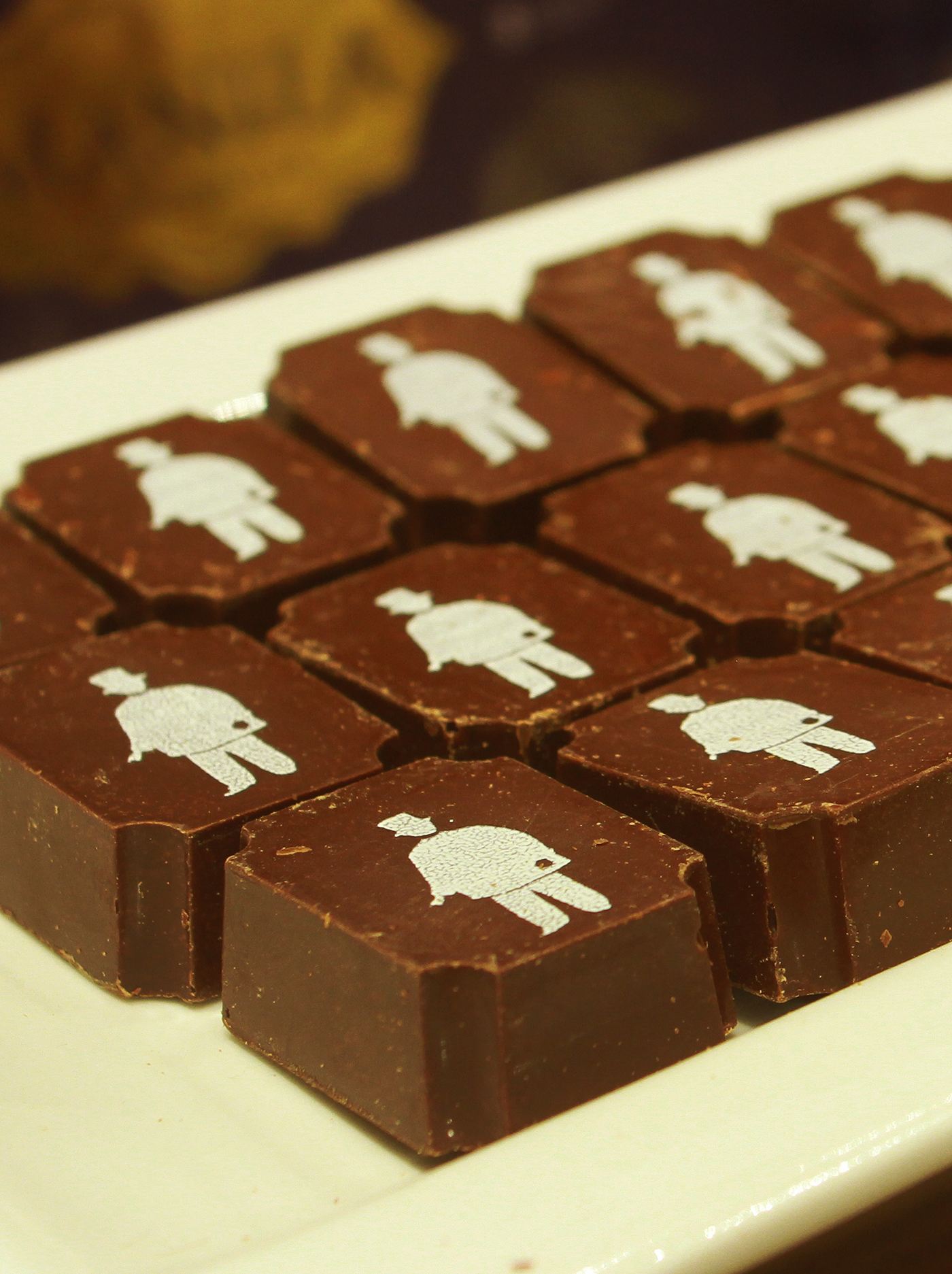
Paying homage to Cebu, chocolatier Raul Matias has developed the masareal, the peanut version of the Spanish marzipan (almond paste with egg).
“In the authentic masareal, the peanuts are boiled, ground and mixed with sugar,” says Matias. “I toast the peanuts to bring out the flavors. The toasting extends the shelf life.”
His Manila Chocolatier pralines and bars, infused with native flavors, have been a big hit in the luxury outlets of Duty Free Philippines and SM Kultura. On Feb. 11, SM Kultura in Cebu will launch Manila Chocolates with the addition of the masareal, variant as a nod to the province.
First wave
Matias says the launch will highlight the chocolate with mangoes using the island’s signature fruit.
“The mango filling is a challenge to make because it is too sweet,” he adds. “Mango tends to overpower the subtle acidity of the chocolates. It took me over 50 trials to get the balance of sweet and bitter flavors.”Matias belongs to the first wave of Filipino chocolatiers, who started with small batches before they produced large quantities for stores. He credits his uncompromising standards to the intense training he got at Valrhona Chocolate School in France, Callebaut’s Chocolate Academy in Belgium, and Ecole Chocolat in Vancouver, Canada.
Chocolates basically consist of cacao beans and sugar. Matias sources beans from socio-entreprenuer Roberto Crisostomo of Davao. The latter has been supplying cacao beans to prominent Belgian chocolatier Callebaut.
“With beans from Davao, it’s easy to get taste profile of Belgian chocolates. I’m proud to say that my chocolates are 100-percent Pinoy,” declares Matias. Matias’ landmark success is the Manila Chocolatier, pralines with familiar flavors.
The leche flan praline is an egg custard and a ganache, a blend of chocolate and cream. The banana cue variant is Cavendish banana puree inside the praline. The zesty, biting flavor of ginger is infused in the chocolate salabat (ginger tea) variant.Chocolate lovers who want strong flavors will get a kick out of the fermented coconut wine or lambanog praline. Jelly-flavored pandan and coconut meat make the filling for the buko pandan praline. The mildly sweet-sour flavor of the calamondine is steeped in the calamansi praline.
Stamped with an icon
Each flavor is stamped with a cultural icon such as a gentleman in a barong on the barako coffee variant, coconut trees on the Palawan honey variant, and Mindanao’s mythical bird, the sarimanok on the bukayo or coconut macaroon praline.
The muscovado nougat praline with Darna’s face on the shell is the most popular for the depth of flavor of the caramel made from raw cane sugar.
When Manila Chocolatier was launched at SM Kultura in Megamall, the boxes had to be replenished regularly. The Filipinos bought them as presents. The flier inside the box explained the provenance of the ingredients and the cultural meanings of the symbols.
“Only a few chocolatiers make pralines,” says Matias. “Majority are into the bean-to-bar variety. Making the praline—a shiny chocolate shell with fillings—is exacting, especially the fillings. You need to understand the chemistry in getting the balance of flavors.”Matias has also produced chocolate bars, with the mango variant as the most salable.
“Fermentation and roasting the beans are important,” he explains. “This process creates the unique selling point of the bar.”
Chocolatiers like Matias improved the quality of local offerings and made the public appreciate dark chocolate. The Manila Chocolatier is a tasty postcard of Philippine culture. —CONTRIBUTED